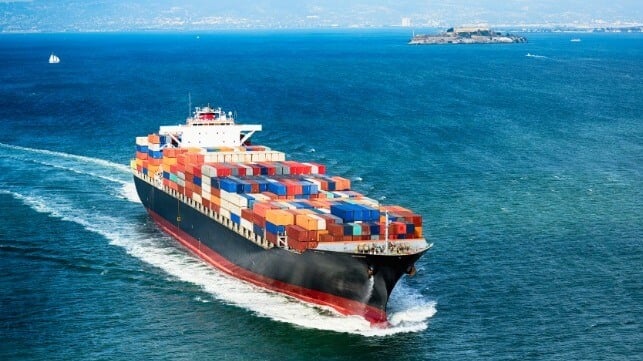Containerships Absorb Red Sea Diversions as Schedule Reliability Improves

Four months into the Red Sea diversions, liner shipping seems to have absorbed the disruptions with the major container carriers showing the first upward movement in five months for schedule reliability. Analytics company Sea-Intelligence in its later report on container carrier schedules reports the first monthly improvement achieving nearly 56 percent reliability in March which puts the industry back on par with the emergence from the pandemic. Late-arriving ships also reduced their waits by more than half a day to levels similar to November 2023.
Sea-Intelligence tracks performance across 34 different trade routes for more than 60 carriers. They calculate that the container carriers improved their reliability by 1.6 percent in March 2024 versus the prior month and achieved the highest level so far in 2024. Schedule reliability peaked at over 64 percent in September and October 2023, but declined every month after that as the Panama Canal began reducing transits, and then the Houthis started their attacks in mid-November.
“As the round-Africa routings normalize, and the carriers’ service networks stabilize, schedule reliability has started to improve,” reports Alan Murphy, CEO of Sea-Intelligence, “That said, reliability is still not on par with pre-crisis.”
Carriers adjusted schedules, changed routings, and brought back into service additional tonnage helping to absorb the impact of the diversions on their operations. Also likely to have provided additional assistance, carriers are beginning to take delivery of the large orderbook for new containerships built up in 2020 and 2021. In a separate report, Alphaliner highlights that 41 new containerships with a capacity of 260,000 TEU were delivered in March followed by a further 50 new ships with a total capacity of 330,000 TEU in April.
The average delay for late-arriving vessels was also down in March returning to levels similar to the average in 2020. Vessels clawed back half a day in March versus February, with the average at 5.03 days. It was at 5.06 days in November 2023 but rose to nearly 6.2 days in January 2024.
The improvements also showed in the performance of the individual carriers. Among the dozen largest companies, only CMA CGM and HMM had a decline in their schedule reliability in March. The average among the top carriers was nearly 53 percent, up from 50 percent in February, and eleven of the top carriers were above the 50 percent threshold. Only CMA CGM and PIL fell slightly below at 49 percent or above.
While the expectation is that carriers will continue to divert routes away from the Red Sea, the predictability of their service helps with the performance. In addition to the introduction of new ships to help further reduce pressures, the Panama Canal has announced that it would add back slots which will help the smaller to mid-sized containerships that can transit the original locks and further ease some of the pressures on schedules.
